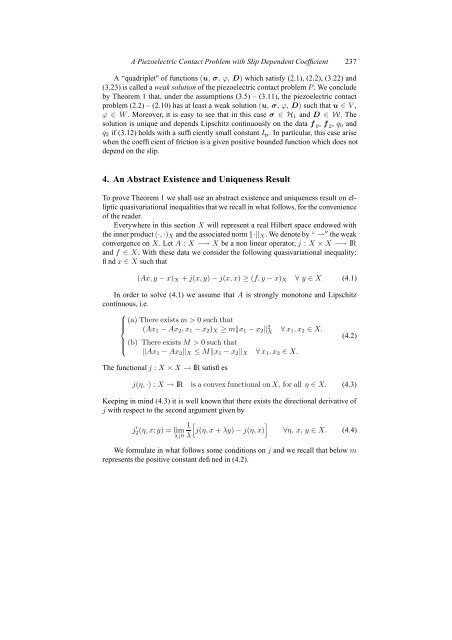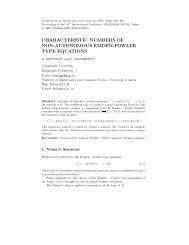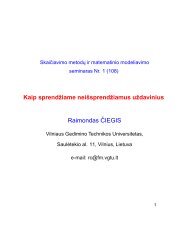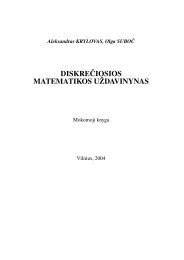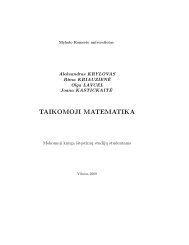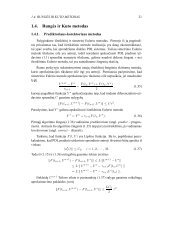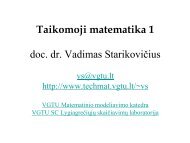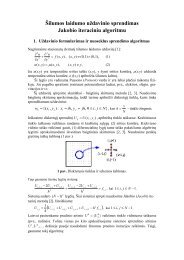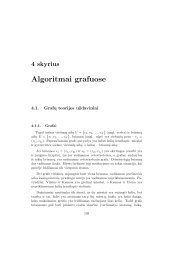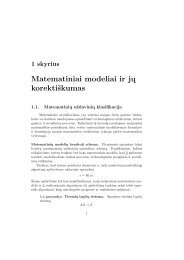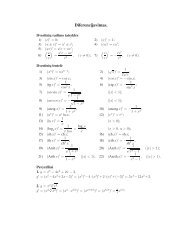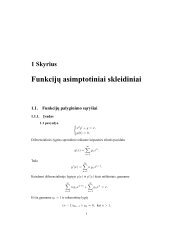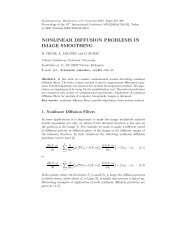a piezoelectric contact problem with slip dependent coefficient of ...
a piezoelectric contact problem with slip dependent coefficient of ...
a piezoelectric contact problem with slip dependent coefficient of ...
Create successful ePaper yourself
Turn your PDF publications into a flip-book with our unique Google optimized e-Paper software.
A Piezoelectric Contact Problem <strong>with</strong> Slip Dependent Coefficient 237A “quadriplet" <strong>of</strong> functions (u, σ, ϕ, D) which satisfy (2.1), (2.2), (3.22) and(3.23) is called a weak solution <strong>of</strong> the <strong>piezoelectric</strong> <strong>contact</strong> <strong>problem</strong> P . We concludeby Theorem 1 that, under the assumptions (3.5) – (3.11), the <strong>piezoelectric</strong> <strong>contact</strong><strong>problem</strong> (2.2) – (2.10) has at least a weak solution (u, σ, ϕ, D) such that u ∈ V ,ϕ ∈ W . Moreover, it is easy to see that in this case σ ∈ H 1 and D ∈ W. Thesolution is unique and depends Lipschitz continuously on the data f 0 , f 2 , q 0 andq 2 if (3.12) holds <strong>with</strong> a sufficiently small constant L µ . In particular, this case arisewhen the <strong>coefficient</strong> <strong>of</strong> friction is a given positive bounded function which does notdepend on the <strong>slip</strong>.4. An Abstract Existence and Uniqueness ResultTo prove Theorem 1 we shall use an abstract existence and uniqueness result on ellipticquasivariational inequalities that we recall in what follows, for the convenience<strong>of</strong> the reader.Everywhere in this section X will represent a real Hilbert space endowed <strong>with</strong>the inner product (·, ·) X and the associated norm ‖·‖ X . We denote by “ ⇀ ′′ the weakconvergence on X. Let A : X −→ X be a non linear operator, j : X × X −→ IRand f ∈ X. With these data we consider the following quasivariational inequality:find x ∈ X such that(Ax, y − x) X + j(x, y) − j(x, x) ≥ (f, y − x) X ∀ y ∈ X (4.1)In order to solve (4.1) we assume that A is strongly monotone and Lipschitzcontinuous, i.e.⎧(a) There exists m > 0 such that⎪⎨ (Ax 1 − Ax 2 , x 1 − x 2 ) X ≥ m‖x 1 − x 2 ‖ 2 X ∀ x 1, x 2 ∈ X.⎪⎩(b) There exists M > 0 such that‖Ax 1 − Ax 2 ‖ X ≤ M‖x 1 − x 2 ‖ X ∀ x 1 , x 2 ∈ X.The functional j : X × X → IR satisfies(4.2)j(η, ·) : X → IR is a convex functional on X, for all η ∈ X. (4.3)Keeping in mind (4.3) it is well known that there exists the directional derivative <strong>of</strong>j <strong>with</strong> respect to the second argument given byj 2 ′ 1[](η, x; y) = lim j(η, x + λy) − j(η, x)λ↓0 λ∀η, x, y ∈ X. (4.4)We formulate in what follows some conditions on j and we recall that below mrepresents the positive constant defined in (4.2).


